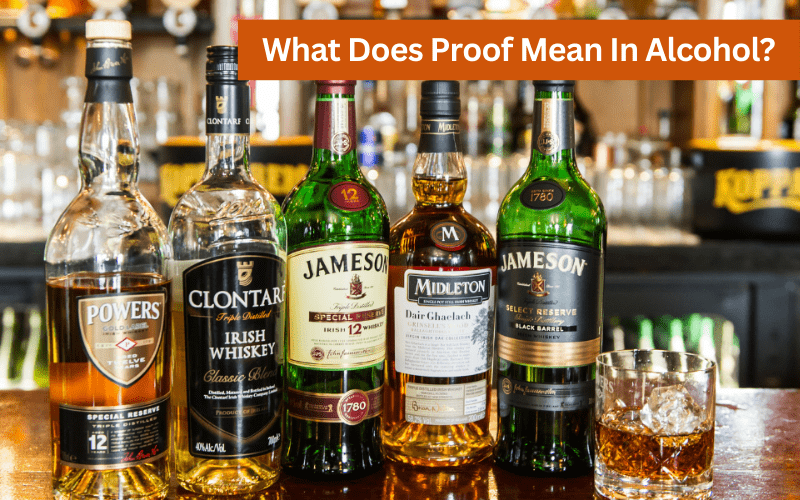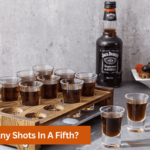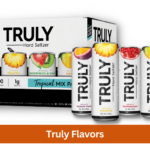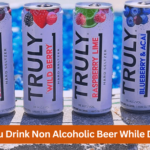Have you ever wondered what does proof mean in alcohol? As a frequent social drinker, I’ve always been curious about the science behind the alcohol content in my favorite drinks. But it wasn’t until recently that I realized how crucial understanding proof is for making informed decisions about alcohol consumption. After a particularly boozy night out with friends, I woke up with a pounding headache and a queasy stomach, and I couldn’t help but wonder if the proof of the drinks I had chosen played a role in my discomfort. This experience prompted me to dive deeper into the world of what does proof mean in alcohol.
What Does Proof Mean in Alcohol?
Do you know what does proof stand for in alcohol? Proof is a measurement of the alcohol content in an alcoholic beverage, which is equal to twice the percentage of alcohol by volume.
For instance, a 50% ABV whiskey is considered 100-proof, while an 80-proof drink contains 40% alcohol.
What does 100 proof mean in alcohol?
“100 proof” is a term used to describe the alcoholic content of certain beverages, particularly distilled spirits such as whiskey, vodka, gin, and rum. Therefore, a drink that is 100 proof contains 50% ABV. This means that half of the liquid volume in the drink is pure alcohol.
What does 200 proof ethanol mean?
200 proof ethanol refers to pure, anhydrous ethanol that is 100% alcohol by volume (ABV). It is also known as absolute ethanol or anhydrous alcohol. The term “proof” is not typically used to describe pure ethanol, as proof is defined as twice the ABV and pure ethanol is 100% ABV.
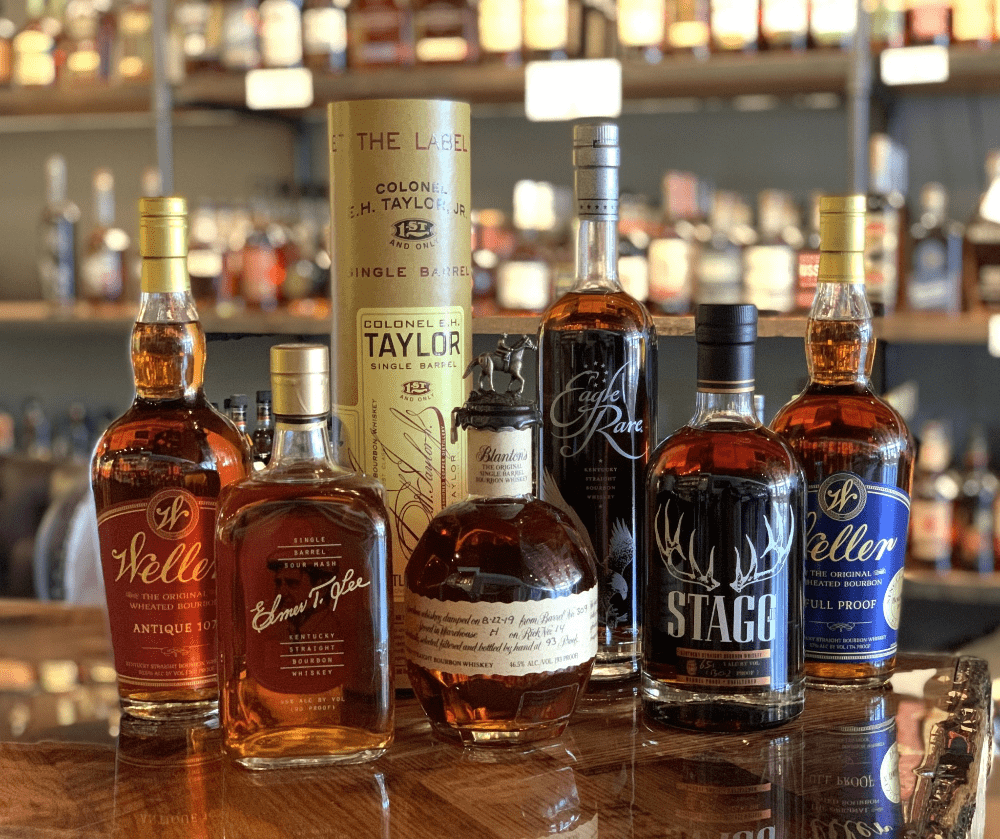
Where Did Proof Alcohol Originate?
The term “proof” in the context of alcohol originated in England during the 1500s when the government would levy a higher tax on alcoholic beverages with a higher alcohol content.
The determination of alcohol content was carried out using a crude test, where a gun pellet was soaked with the drink and ignited to see if the gunpowder would burn. This test was referred to as “proving” the alcohol and eventually led to the term “proof” being used to describe the alcohol content of a drink.
Understanding ABV vs. Proof
| Alcohol-by-Volume (ABV) | Proof | |
| Definition | The percentage of pure alcohol in the total volume of the beverage | A measure of the alcohol content that is twice the percentage of pure alcohol by volume |
| Calculation | Calculated by dividing the amount of pure alcohol by the total volume of the beverage, then multiplying the result by 100 | Simply double the ABV value |
| Usage | Used worldwide as a standard measure of alcohol content | Used predominantly in the United States and some other countries |
| Example | A bottle of beer labeled as 5% ABV contains 5 milliliters of pure alcohol per 100 milliliters of total beverage volume | A 90-proof bourbon is 45% ABV (90 divided by 2), while a 151-proof rum is 75.5% ABV (151 divided by 2) |
| Conversion | Multiply the ABV value by 2 to get the corresponding proof value | Divide the proof value by 2 to get the corresponding ABV value |
How Does Proof in Alcohol Work?
Proof in alcohol is a way of measuring the alcohol content in a drink. It’s determined by doubling the percentage of alcohol by volume (ABV) and is usually used in the United States. The higher the proof, the stronger the drink, and the more it can impact the flavor and texture.
It’s crucial to consider proof when selecting alcohol for personal preference, price, and quality. However, high-proof alcohol can be dangerous if consumed excessively and can cause alcohol poisoning and other negative effects. Understanding proof is essential for responsible and enjoyable drinking.
Why Alcohol Measured by Proof?
Reasons why proof is used to denote the strength of alcohol are enumerated below:
- Historical reasons: Proof is a measurement that originated in England in the 16th century as a means of taxing alcoholic beverages based on their alcohol content.
- Standardization: Proof provides a standardized measure of alcohol content, making it easier for consumers to compare different drinks and for manufacturers to produce consistent products.
- Legal requirements: In many countries, there are legal requirements that alcoholic beverages must be labeled with their alcohol content, and proof is one of the accepted methods of measurement.
- Consumer information: Knowing the proof of a drink can help consumers make informed decisions about their drinking habits and the impact of the drink on their body.
- Taste and quality: The proof of a drink can impact its flavor, aroma, and texture, making it an important factor for enthusiasts and connoisseurs.
- Safety: High-proof alcohol can be dangerous if consumed excessively, and knowing the proof of a drink can help individuals make responsible decisions about their alcohol consumption.
So, measuring alcohol by proof provides a standardized measure of alcohol content that is useful for taxation, labeling, consumer information, taste and quality, and safety purposes.
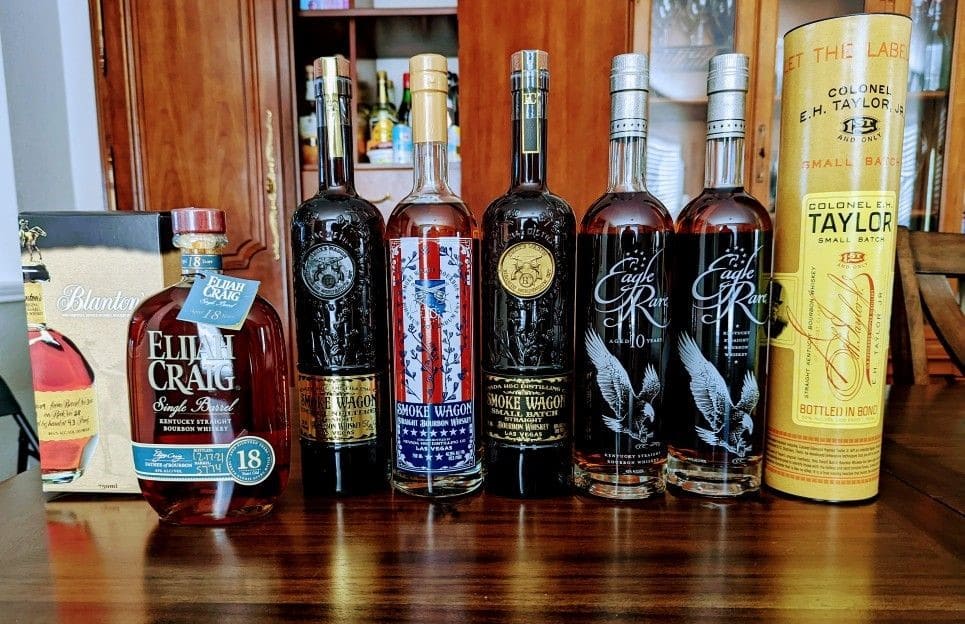
What Factors Affect Proof?
Several factors can affect the proof of alcohol, including:
- Distillation: The process of distilling alcohol removes water and increases the concentration of alcohol, leading to a higher proof.
- Aging: When alcohol is aged in barrels, some of the water evaporates, leaving behind a higher concentration of alcohol and a higher proof.
- Ingredients: Different ingredients used in making alcohol can affect the final proof. For example, using more sugary ingredients can lead to a higher alcohol content and a higher proof.
- Brewing methods: The brewing method can impact the final alcohol content and proof of the drink. For example, the length of time that beer is fermented can affect its alcohol content and proof.
- Dilution: Adding water or other liquids to alcohol can lower its proof. This is why many spirits are bottled at a high proof and then diluted with water before consumption.
- Mixing: Mixing two or more alcoholic beverages together can also affect the overall proof of the drink, as the alcohol content of each ingredient is combined.
How Proof Impacts the Flavor?
There are a number of ways in which alcohol’s proof might affect its flavor.
- Intensity: A higher proof drink will typically have a stronger, more intense flavor than a lower proof drink. This is because the higher concentration of alcohol can enhance the taste and aroma of the drink.
- Burn: High-proof alcohol can have a more intense “burn” or warming sensation as it goes down, which can impact the overall flavor of the drink.
- Texture: The proof of a drink can impact its texture, with higher proof drinks often feeling thicker or more viscous in the mouth.
- Dilution: Adding water or ice to a high-proof drink can dilute the alcohol content and change the flavor profile, making it more palatable for some people.
- Mixers: Mixing a high-proof spirit with other ingredients, such as juice or soda, can also impact the overall flavor of the drink.
Why Beer and Wine are not Measured by Proof?
Beer and wine are not measured by “proof” because they typically have a lower alcohol content compared to spirits or hard liquor. The alcohol content of beer and wine is typically measured using a different scale called “alcohol by volume” or “ABV,” which is the percentage of pure alcohol in the total volume of the drink.
Unlike spirits, beer and wine are not usually distilled, which means that the alcohol content is not concentrated in the same way as spirits. As a result, they typically have a lower ABV than spirits and are not measured in “proof”.
However, it’s worth noting that some high-end beers and wines can have a relatively high ABV, and it’s important to know the alcohol content of any drink before consuming it. Understanding ABV and proof can help individuals make informed decisions about their alcohol consumption and avoid overindulging.
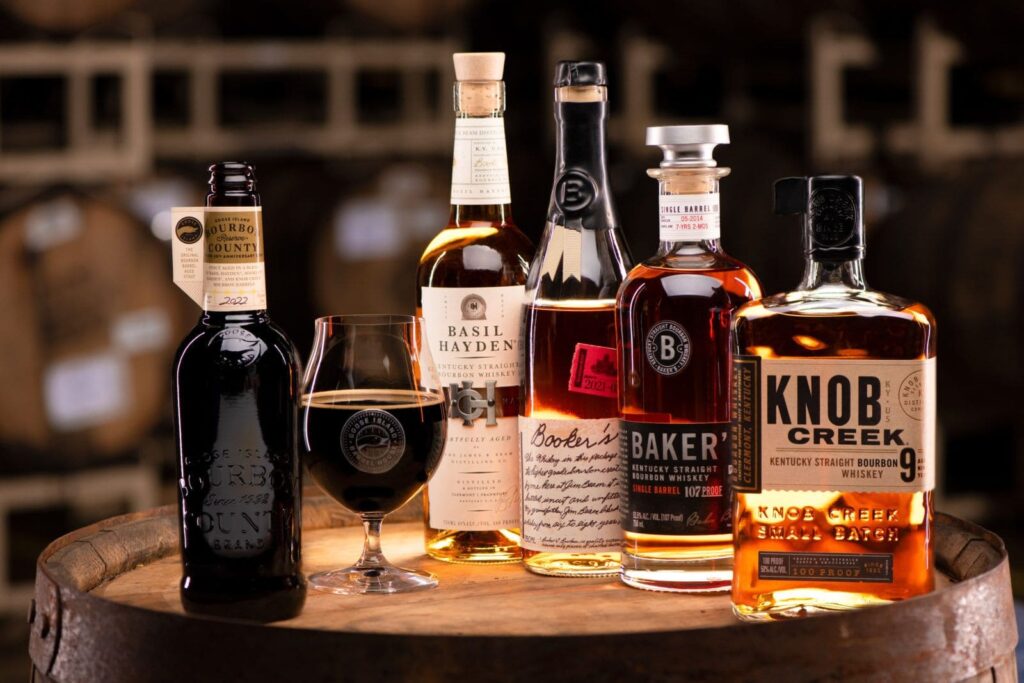
Alcohol Proof by Type of Liquor
The proof of alcohol can vary depending on the type of liquor. Here are some examples:
Vodka
What does 80 proof vodka mean? The proof of vodka typically ranges from 80 to 100 proof, or 40 to 50% alcohol by volume (ABV).
Whiskey
What does proof mean in whiskey? The proof of whiskey can vary widely depending on the type and aging process. Bourbon and Scotch whiskey typically range from 80 to 100 proof (40 to 50% ABV), while cask-strength whiskeys can be as high as 130 proof (65% ABV) or higher.
Rum
The proof of rum can range from 80 to 151 proof (40 to 75.5% ABV), with overproof rum being more common in some countries.
Gin
The proof of gin typically ranges from 80 to 100 proof (40 to 50% ABV).
Tequila
The proof of tequila can range from 80 to 110 proof (40 to 55% ABV), with higher-proof options typically reserved for sipping rather than mixing.
Liqueurs
The proof of liqueurs can vary widely depending on the specific product. Some liqueurs have a lower proof, around 20 to 40 proof (10 to 20% ABV), while others can be as high as 100 proof (50% ABV) or more.
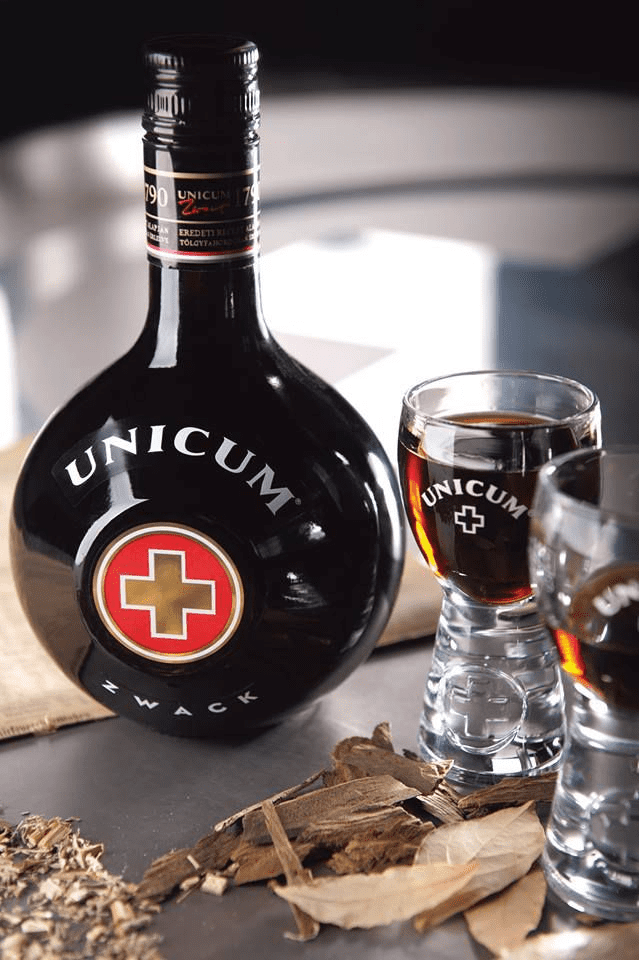
What is Considered as a “Normal” Alcohol Proof?
The alcohol proof that is considered “normal” can vary depending on the type of alcohol. Generally, alcoholic beverages with a proof between 80 and 100 are considered “normal” for spirits like whiskey, vodka, gin, and rum.
You should note that the term “normal” can be subjective and dependent on cultural norms and personal preferences. It’s important to drink alcohol responsibly and in moderation, regardless of the proof or ABV of the drink.
What is Considered a “High” Alcohol Proof?
The alcohol proof that is considered “high” can vary depending on the type of alcohol. Generally, alcoholic beverages with a proof above 100 are considered “high” for spirits like whiskey, vodka, gin, and rum.
Some high-end spirits or cask-strength whiskeys can have a proof above 120, while some overproof rums can have a proof above 150. However, high-proof alcohol can be dangerous if consumed excessively and can cause alcohol poisoning and other negative effects.
What Proof of Alcohol Kill Bacteria?
Alcohol can effectively kill bacteria at a concentration of at least 60% alcohol by volume (120 proof) according to the Centers for Disease Control and Prevention (CDC). This is why many hand sanitizers and disinfectants contain at least 60% alcohol.
However, it’s important to note that alcohol can only kill certain types of bacteria and viruses, and is not effective against all germs. Additionally, high-proof alcohol can be dangerous if ingested, and should not be used as a cleaning or disinfecting agent.
The Best-Tasting High-Proof Alcohols
Several popular high-proof liquors and their distinctive flavors are listed below.
- Scotch Whisky: Some high-end scotch whiskeys, such as those aged in oak barrels for many years, can have a high-proof and a complex flavor profile that includes smoky, peaty, and fruity notes.
- Cognac: This type of brandy is distilled from wine and aged in oak barrels for several years. Some high-proof cognacs can have a rich and complex flavor profile with notes of fruit, spice, and oak.
- Mezcal: This Mexican spirit is made from agave plants and is often distilled at a high-proof level. Some varieties of mezcal have a smoky flavor that comes from being cooked in underground pits before distillation.
- Overproof Rum: This type of rum has a higher alcohol content than standard rum and is often used in cocktails or sipped neat. Overproof rum can have a range of flavor profiles, from sweet and fruity to spicy and complex.
- Absinthe: This herbal spirit is known for its high-proof and distinctive flavor, which includes notes of anise, fennel, and wormwood. Some high-end absinthes are aged in oak barrels, which can add complexity to the flavor profile.
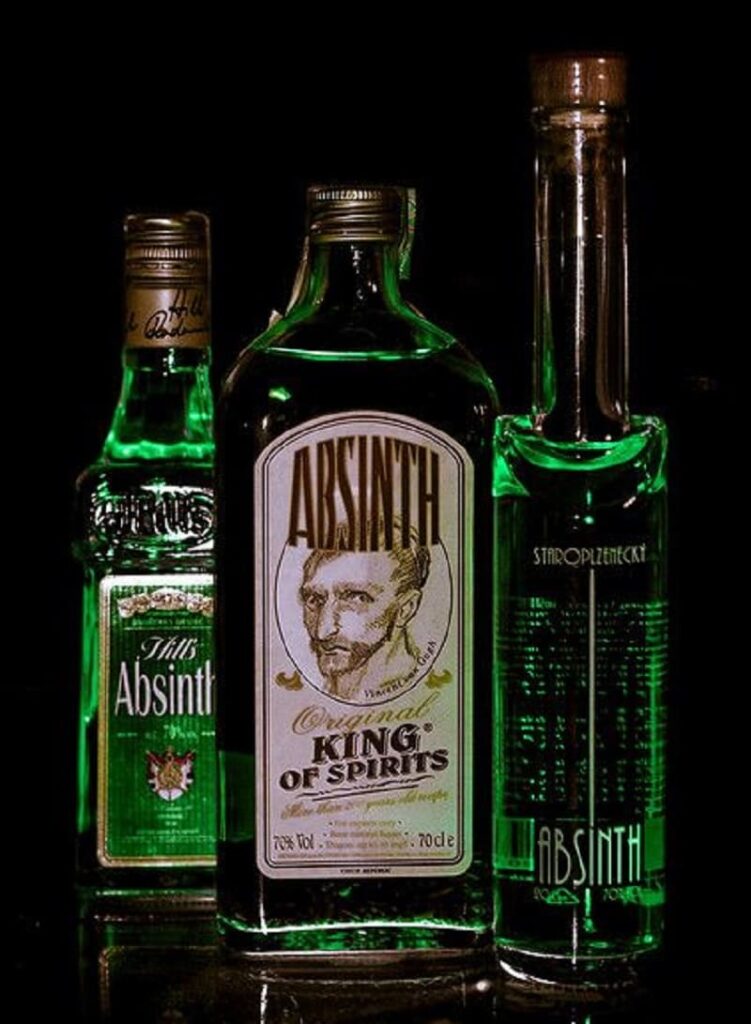
The Risks of High-Proof Alcohol
Some of the dangers of high-proof liquors include the following:
- Alcohol Poisoning: Consuming high amounts of high-proof alcohol can lead to alcohol poisoning, which can be life-threatening. Symptoms of alcohol poisoning include confusion, vomiting, seizures, and loss of consciousness.
- Increased Intoxication: High-proof alcohol can lead to increased intoxication and impairment, which can increase the risk of accidents, injuries, and other negative consequences.
- Dehydration: High-proof alcohol can lead to dehydration, which can cause headaches, dizziness, and other symptoms.
- Addiction: Consuming high-proof alcohol can lead to addiction and dependence, which can have long-term negative consequences for mental and physical health.
- Interactions with Medications: Consuming high-proof alcohol can interact with certain medications, making them less effective or causing negative side effects.
- Risky Behavior: Consuming high-proof alcohol can impair judgment and increase the likelihood of engaging in risky behavior, such as driving under the influence or having unprotected sex.
FAQs
Is higher proof alcohol better?
Higher proof alcohol is not necessarily better than lower proof alcohol, as taste and personal preference are subjective. Some people prefer higher proof alcohol for its potency and ability to produce a stronger buzz, while others prefer lower proof alcohol for its milder taste and lower alcohol content.
Can you drink 200 proof alcohol?
Pure 200 proof alcohol (100% ABV) is not safe for human consumption, as it can cause severe damage to the digestive system and even death. Therefore, it should not be consumed under any circumstances.
What does 100% alcohol taste like?
Pure alcohol (100% ABV) has a strong, harsh taste and can burn the mouth and throat. It is not typically consumed on its own due to its toxicity and potential health risks.
What is the strongest alcohol in terms of proof?
The strongest alcohol in terms of proof varies by brand and type, but some examples of high-proof spirits include grain alcohol (190 proof), Everclear (190 proof), and Spirytus (192 proof).
Is high-proof alcohol more expensive than lower proof options?
High-proof alcohol can be more expensive than lower proof options due to the higher concentration of alcohol and the cost of production. However, this can vary by brand and type of alcohol.
Can high-proof alcohol be used as a cleaning or disinfecting agent?
High-proof alcohol (at least 60% ABV) can be used as a cleaning or disinfecting agent, as it has antimicrobial properties that can kill bacteria and viruses. However, it should not be consumed or inhaled.
Why do some people prefer high-proof spirits?
Some people prefer high-proof spirits for their potency, as they can produce a stronger buzz and require less liquid to achieve the desired effect. Additionally, some high-proof spirits may have a more complex and intense flavor profile.
Are there any health benefits to consuming high-proof alcohol in moderation?
While moderate alcohol consumption (one drink per day for women, and up to two drinks per day for men) has been associated with certain health benefits, there is no evidence to suggest that high-proof alcohol specifically has any additional health benefits.
Can you dilute high-proof alcohol to reduce its potency?
High-proof alcohol can be diluted with water or other liquids to reduce its potency, but it should be done carefully to ensure that the alcohol is still safe to consume.
Is high-proof alcohol legal to buy and sell?
The legal status of high-proof alcohol varies by country and region. In some places, it may be illegal to buy or sell alcohol with a high proof, while in others it may be legal but regulated.
Conclusion
In general, after delving into the intricacies of what does proof mean in alcohol, it is clear that understanding this concept is crucial for any alcohol consumer. As a casual drinker, I have often been curious about the proof of the beverages I consume, but did not fully grasp the significance of this measurement. However, after researching what does proof mean in alcohol, I am now more aware of how proof affects the flavor, strength, and even health risks associated with alcohol. It is my hope that this article has shed some light on this important aspect of alcohol and has helped you make more informed decisions when selecting and consuming your favorite drinks.
I’m Chen Mina, from Vol de Nuit, who has a special passion for bartending, especially mixing wine, beer, and cooktail. Here you will find content about alcoholic beverages, I will bring you knowledge that few people know about this drink.

